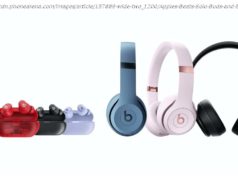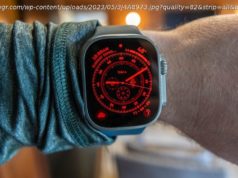Mac OS High Sierra (macOS 10.13). As the new name suggests, it’s just a refinement of last year’s Mac OS Sierra. In fact, you could sum up what’s new in an article about as short as this one.
It’s no shock that Apple puts most of its effort into improving the iPhone. The iPhone is a cash cow big enough to be heard from the moon.
The Mac, on the other hand, constitutes only a puny 12 percent of Apple’s revenue.
So Mac fans should be grateful, I guess, that the mothership still releases another free version of the Mac OS every fall. These upgrades (usually) make all of our Macs better without our having to spend a penny.
The one Apple released this week (available in the Mac app store) is called Mac OS High Sierra (macOS 10.13). As the new name suggests, it’s just a refinement of last year’s Mac OS Sierra. In fact, you could sum up what’s new in an article about as short as this one.
Apple has continued to work on Safari, its Web browser, and says that the new version is the fastest desktop Web browser in the world.
It also uses less power. Apple claims that you can watch Netflix for two hours longer in Safari than other browsers. In practice, that’s close to true. My expensive MacBook Pro gets absolutely pathetic battery life—about 3 hours per charge when I use Chrome as my browser. Using Safari instead, I get four hours. Woo!
Maybe even more thrilling to the world’s Internet surfers (and less thrilling to advertisers), Safari can now auto-block auto-play videos. Now, no video begins playing unless you click it. For each Web site, you can choose Safari->Settings for This Website and specify that videos are never allowed to play; always allowed; or not allowed only if they have sound.
This feature works beautifully, and it makes the Internet a calmer place. It easily auto-paused videos on CNET, CNN, Bloomberg, and, yes, even Yahoo. (If you can’t seem to get it to work, it’s probably because you have an ad blocker like AdBlock Plus. Those extensions seem to interfere with Safari’s new feature.)
That’s not the only way Safari will frustrate advertisers. Apple says that “Safari now uses machine learning to identify advertisers and others who track your online behavior, and removes the cross‑site tracking data they leave behind.”
This is cool, too: You can create different viewing settings for different sites. You might like the New York Times site to appear with larger text, Flash turned on for Dilbert.com, and so on. Page zoom, Reader view, location services, and use of your camera and microphone are among the settings memorized for each site.
And if you like the Reader view—which hides all ads, navigation stuff, blinking stuff, competing colors and fonts—you can now tell Safari to use it for everything. Every time you open an article that works with Reader, it pops into that format automatically. You end up with far fewer migraines from just trying to surf the Web.
This is a big one. Ladies and gentlemen, the Photos app is finally ready for prime time.
The editing tools have been redesigned and goosed nearly to Photoshop levels; you can now manipulate the Curves of a photo’s histogram, or edit only the reds (for example) in a photo.
I love that the Auto-Fix button is now right on the Photos main toolbar. This is the editing control most people use most of the time—it does a very good job at fixing the color, exposure, and contrast values for a photo—and now you don’t have to heave into Editing mode to apply it to a photo, or a whole batch of them.






